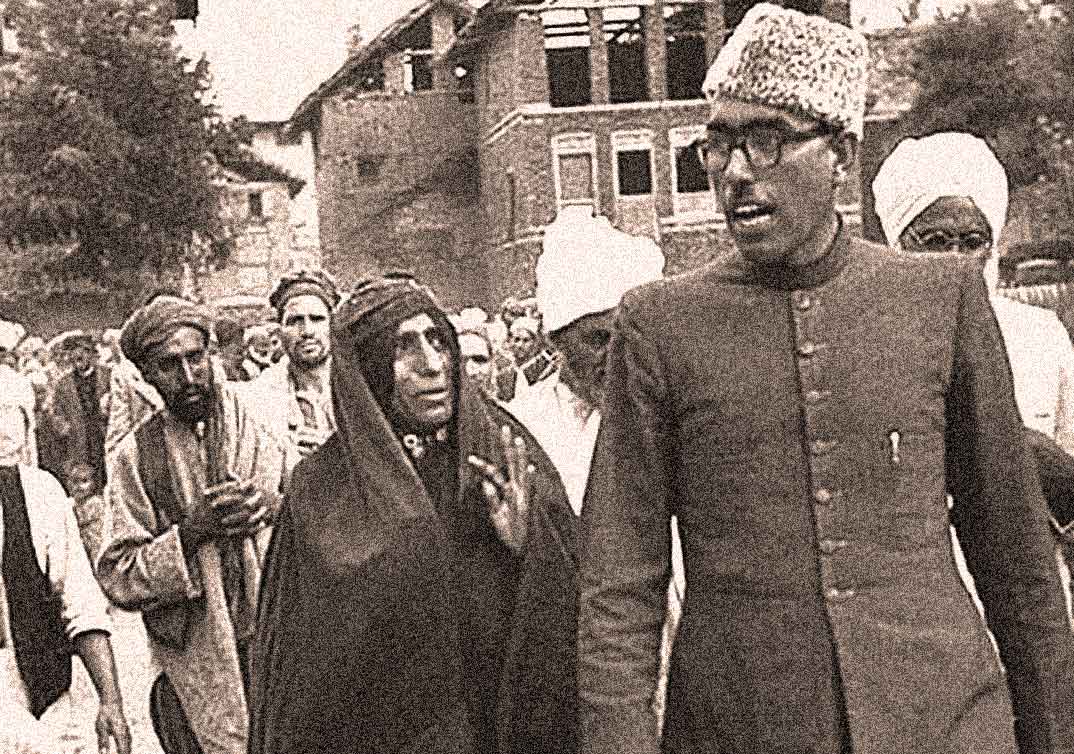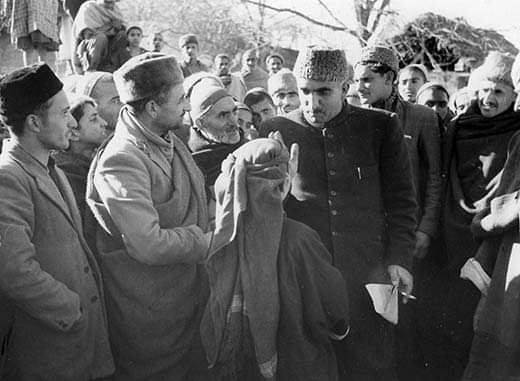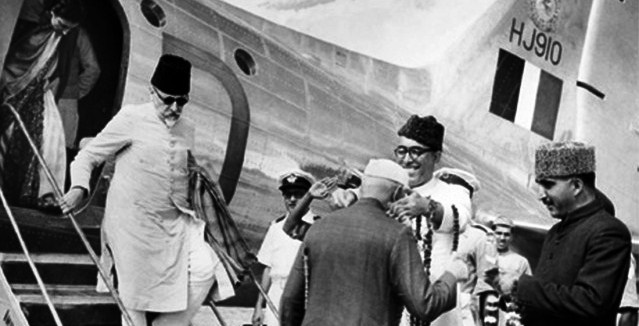Stark similarities have surfaced in Kashmir where a certain development doctrine has evoked the dusted document.
Following the abrogation of Article 370, New Delhi’s administrative apparatus used the “Naya Kashmir” narrative as a new governance blueprint for the politically-sensitive region.
Bringing the “brand-new” development under this much-talked about term remains an apparent motive.
But the local unionists—especially the diehards of former Prime Ministers of Jammu and Kashmir, Sheikh Mohammad Abdullah and Bakshi Ghulam Mohammad—chide Government of India for “selling the old wine in the new bottle”.
These low-lying men—once having a say in Kashmir’s obscuring politics, and now part of the beleaguered camp—argue that the term has been mostly used and exploited to fit different political aspirations.
The genesis of this governance ideal itself remains colonial in letter and spirit.
Before the throne takeover in 1947, a major rebellion against the Dogra regime led to the compilation of one of the most prominent documents written in Kashmir history.
That document originated when the trend of global politics was leaning towards Leftist ideas. In the midst of such political developments, the princely state of Jammu & Kashmir was fighting its own battle to end the shackles of oppression.
The “poster boy” of this resistance later taking a form of the “Quit Kashmir Movement”—Sheikh Mohammad Abdullah—was inspired from the same leftist ideology which framed the “Naya Kashmir” manifesto.
The roots of this manifesto, some historians say, lie in the period of 1920-30 — when Muslim leadership demanded social and political rights from the tyrannical regime.
But the same document, for some political reasons, was published only after Muslim Conference was converted into National Conference.
It was initially drafted with a view of Kashmir being a sovereign state. “The manifesto did not delineate the status of Kashmir within the future political structure of independent India,” writes Chitrelekha Zutshi, Associate professor of History at the College of William and Mary, USA. “Assuming that the state would be autonomous regardless of the political entities that replaced British rule.”
The manifesto, however, was denounced in 1945, with the changing nature of Kashmir politics and its independent status. “Though Sheikh’s “Naya Kashmir” intended social reforms, it asserted to be more radical in its nature,” says Javid-ul-Aziz, professor of Modern History at the University of Kashmir.
Since the manifesto was influenced by the socialist orientation, it favoured labourers and peasants and tried to restructure the agrarian society.
But at the same time, historians argue, the document wasn’t always pro-people. Sheikh used it to create a popular opinion, it’s said, even if it meant to restrict opposition and put them under surveillance.

After Prime Minister Sheikh Abdullah was dethroned in a coup d’état on August 9, 1953, his deputy Bakshi Ghulam Mohammad took “Naya Kashmir” forward while retaining some characteristics of it.
“Bakshi focused on the developmental part of the old ‘Naya Kashmir’ manifesto,” Prof Aziz says. “It was a departure from the Sheikh’s ideology focusing on agrarian relations.”
However, Bakshi’s policy of re-introducing “Naya Kashmir” was also seen as his shrewd political instinct to make people accept the conditional accession.
Mindful of Sheikh’s massive sway, he had to allure people by any means necessary. Construction of the canal, providing subsidies, free education and establishment of new institutions gave a boost to his developmental plan and added to his popularity. “Even if Bakshi intended to create a strong public support through the developmental plan of Naya Kashmir, we cannot neglect his welfare work,” Prof. Aziz argues.
However, Prof. Hafsa Kanjwal in her paper, “Building a New Kashmir: Bakshi Ghulam Muhammad and the Politics of State-Formation in a Disputed Territory” argues that Sheikh’s successor mainly used “Naya Kashmir” manifesto to cast “pro-India” public opinion.
Bakshi’s administration paid special attention to the tourism industry of Kashmir, Prof. Kanjwal says, not only as a major source of revenue but also to project normalcy to the people of India.
Kanjwal mentions how the government substantially reserved a significant portion of its budget for ‘youth welfare’: “They wanted to ensure youth utilised their time in ‘healthy and non-political’ discussions.”
Bakshi Stadium and Tagore Hall were inaugurated in a similar fashion.

At one fell swoop, Prof. Kanjwal says, Bakshi took extreme measures to control and suppress the growing anti-India sentiments. “Discussion and debates on politics were banned. Books, papers and magazines on religious and anti-government topics were banned as well. One major step towards rebuilding the image was an attempt to Indianise the history of Kashmir. The secular character of Kashmir was widely projected.”
Individuals like Maqbool Sherwani and Brigadier Usman, both of whom were supporters of the National Conference and had been killed in battle against the tribals from northwest Pakistan in 1947, were mentioned in order to shed light on the Kashmiri freedom struggle, Kanjwal notes.
People affiliated with the government would lose their jobs if they spoke against the state, the professor informs. “Preventive Detention Act (PDA) was imposed on suspected people and opposition. People and politicians who held meetings against the state were booked under The Enemy Agents Ordinance.”
A closer look and one may find stark similarities between the “Naya Kashmir” of 1950s and that of the post-2019 era.
Free Press Kashmir is now on Telegram. Click here to Join.
FPK Android App for 2G. Click here to Download.










